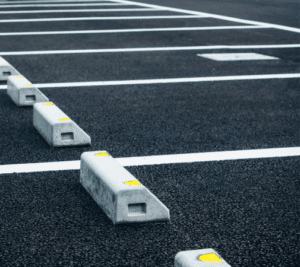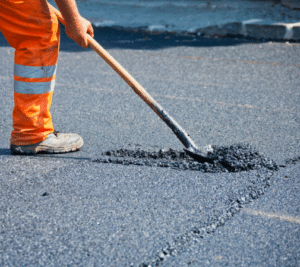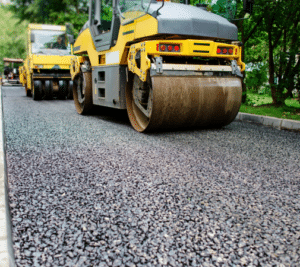Slurry seal is a popular method for maintaining and preserving asphalt pavement, but it often faces misconceptions and misunderstandings. Many people believe that a seal is just a temporary fix or a cheap alternative to more extensive repairs. However, these assumptions couldn’t be further from the truth. If you want to understand the real benefits and misconceptions surrounding slurry seals, keep reading.
What is Slurry Seal?
Slurry-seal is a type of pavement treatment used to protect asphalt surfaces from the elements. It is composed of a mixture of emulsified asphalt, water, aggregates, and additives applied in a thin layer over an existing asphalt surface. A slurry-seal creates a durable and attractive finish to an asphalt road surface while providing protection against weathering, cracking, and other types of damage.
Types of Seals
A slurry-seal is made from an emulsion of asphalt, water, and fine aggregate. It is frequently used to protect and extend the life of pavement surfaces by sealing small cracks and preventing further deterioration of the pavement. Slurry seals can also be used for aesthetic purposes, such as changing the color of an asphalt surface or creating decorative patterns.
There are several different types of seals, including single-coat and double-coat treatments. Single-coat is the most commonly used type of seal, while double-coat seals provide better durability and protection against weathering.
Benefits of Slurry Seal Treatment
An asphalt slurry seal treatment offers a range of benefits for road surfaces and pavements. This cost-effective solution helps extend the roads’ lifespan by providing a protective layer that seals cracks and prevents water penetration. By filling in small cracks and imperfections, slurry-seal treatment helps improve the road’s overall smoothness and ride quality, reducing noise and enhancing safety for motorists. Additionally, it can rejuvenate the appearance of worn-out surfaces, giving them a fresh and well-maintained look. Slurry-seal treatment is a proactive approach to pavement maintenance that can save municipalities and organizations significant costs in the long run by preventing the need for more extensive repairs or resurfacing.
Application Process
The process of applying slurry seal treatment begins with the preparation of the existing asphalt surface. This involves cleaning and removing loose material such as dirt, rocks, and vegetation from the pavement surface. The area is then inspected for cracks and other imperfections that need to be addressed before the slurry-seal application. After preparation is complete, a tack coat of asphalt emulsion is applied to help bond the slurry seal to the existing pavement. Finally, the slurry-seal is applied evenly over the surface and allowed to dry before traffic is allowed on the roadway.
Common Misconceptions
Slurry seal is a popular pavement preservation option used by many cities and towns worldwide for decades. Unfortunately, there are a lot of misconceptions about slurry seals floating around, which can be detrimental to its reputation. Below, we will address some of the most common misconceptions about slurry seals so that you can make an informed decision when considering it for your pavement project.
Durability: Slurry seal is often seen as a weak or short-term solution, but this isn’t the case. When applied correctly and with quality materials, a slurry-seal will provide a long-term solution lasting up to 8-10 years. It is because of its durability that a seal is such an efficient pavement preservation option.
Cost Effectiveness: Slurry seal is often considered an expensive pavement treatment, but this isn’t necessarily true. Slurry-seal can be very cost-effective compared to other pavement treatments over the long term. It can extend the life of an asphalt surface, eliminating the need for more costly repairs down the road.
Environmental Friendliness: Slurry seal is made up of natural materials, such as asphalt emulsion, that are biodegradable and safe for the environment. In addition, the slurry seal is much thinner than other pavement treatments and does not require excavation, making it a more eco-friendly option.
Slurry seal is an effective and affordable pavement preservation option providing long-term protection to asphalt surfaces. With proper application and quality materials, a slurry seal can be an environmentally friendly solution that can save you money in the long run.
Advantages and Disadvantages of Using Slurry Seal Treatment on Residential Streets
Slurry seal treatment is a common method of pavement maintenance used on residential streets. It involves using a mixture of asphalt, water, and other materials to create a smooth, even surface that can resist damage from the elements. While slurry-seal treatment is often considered an economical choice for street resurfacing, it has both advantages and disadvantages for residential streets.
One significant advantage of using slurry treatment on residential streets is that it can extend the life of the pavement, making it cost-effective in the long run. Slurry seal also helps to reduce noise levels and improve the overall appearance of a street. On top of that, slurry seal is relatively quick to apply, which helps reduce disruption and minimize inconvenience for residents.
However, there are some disadvantages to using slurry seal treatment on residential streets. Slurry seal is less durable than other methods of pavement maintenance, and it can be prone to cracking in cold weather. It also requires regular maintenance to keep it in good condition, which may be an additional expense for some homeowners. Finally, slurry seals can be challenging to remove if repairs are needed, or a different type of treatment is desired.
Overall, using the treatment on residential streets is an attractive option for many due to its cost-effectiveness and short application time. However, it is essential to consider all aspects of this method before deciding. Slurry-seal must be regularly maintained to ensure long-term effectiveness, and any repairs that may be needed can be difficult and costly. Additionally, it is essential to understand local regulations and zoning laws before starting any street work.
In conclusion, slurry seal treatment is an excellent option for many residential streets. It offers cost-effectiveness and durability, as well as the potential for reducing noise levels and improving the appearance of your street. However, it is essential to understand all the pros and cons of slurry seal treatment before deciding whether or not it is the right choice for your home or neighborhood.
If you’re looking for a cost-effective and reliable pavement maintenance solution, Saguaro Asphalt can help. Our experienced professionals are available to answer any questions about slurry seal treatment and provide support throughout the process to ensure the best results. Contact us today to learn how we can help protect your residential street with slurry-seal treatment.



